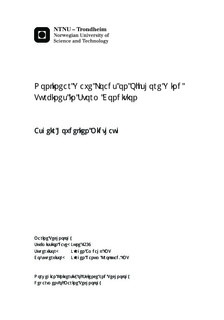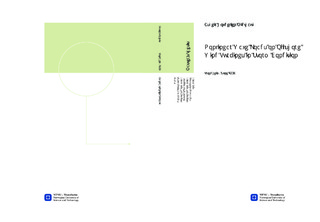| dc.description.abstract | Structural ringing can be caused by non-linear hydrodynamic loads in steep waves, by wave slamming, or by breaking waves. This thesis deals with the first category: non-linear wave loads on bottom-fixed offshore wind turbines in storm condition. Two higher order forcing models are investigated. The FNV (Faltinsen, Newman, Vinje) model accounts for wave loads on a surface piercing column of up to third order of the incident wave field. It is derived by a perturbation of the non-dimensional wave steepness, and requires the column radius to be of the same order of magnitude as the wave amplitude. The higher order FNV forces have their maximum at the free surface, and are decaying exponentially with the water depth. Rainey's slender body forces are not derived using a perturbation approach, but rather by conservation of energy principles. It will be shown that there is agreement between the first and second order forces from FNV and Rainey for regular waves in deep water, while the third order component deviates. Both force models are derived in this thesis.A popular software for dynamic analysis of wind turbines is the open source FAST (Fatigue, Aerodynamics, Structures and Turbulence) code from NREL (National Renewable Energy Laboratory). FAST is capable of producing a time marching simulation of an offshore wind turbine subjected to various environmental loads. However, FAST only supports linear hydrodynamic loads natively. Thus, the force model of interest have to be implemented in the code. An explanation of the theoretical foundation and architecture of FAST is given, as well as details of the force model implementation. A test case in regular waves comparing the individual force components is conducted, where agreement between the first and second order components was shown, as previously stated.Dynamic analysis of a wind turbine model based on the NREL reference turbine is performed for different environmental condition, operational states and turbine configurations. The first natural frequency of the tower is held fixed for all the configurations, to not coincide with the rotor and blade passing frequencies. The magnitude of the top displacement of the turbine was shown to be relatively independent of different tower configurations and forcing models near the natural frequency. No instances of significant structural response due to higher order effects was observed. The effect was however higher for the examined configurations with a non-stiff foundation and flexible tower. It is recommended that future work should investigate the effect of including non-linear wave motion for better modeling of steep waves, as well as the effect of non-linear structural response of the wind turbine. | nb_NO |

